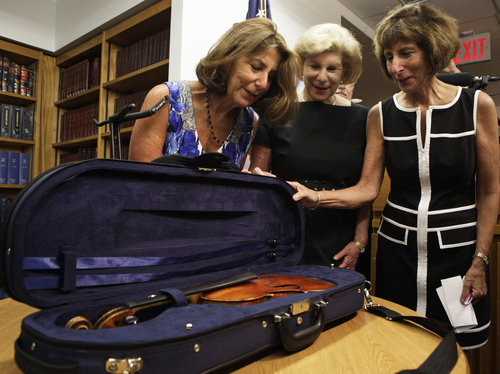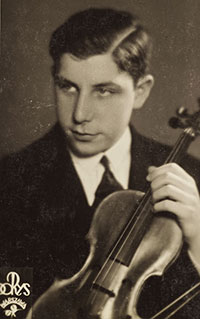In a recent NPR piece, their legal affairs correspondent Nina Totenberg, daughter of the late virtuoso violinist Roman Totenberg, discussed the 35-year case of her father’s stolen prized Stradivarius and its recent recovery. The stealing happened after a concert “while he was greeting well-wishers…it was snatched from his office at the Longy School of Music in Cambridge, Mass.” As Nina recalls, “It was a crushing loss for my father. As he put it, he had lost his “musical partner of 38 years.” And when he would ultimately buy a Guarneri violin from the same period as the Stradivarius, he’d have to rework the fingering of his entire repertoire for the new instrument. My father would dream of opening his violin case and seeing the Strad there again, but he never laid eyes on it again. He died in 2012, but the Stradivarius lived on — somewhere.”
The experience was so surreal that as she puts it, “I had a hard time actually believing it. I called my sisters right away, and we were soon laughing and crying on the phone.”
Fast-forward a few years to this past June when the FBI called Nina to inform her of the recovery of this rare violin. The experience was so surreal that as she puts it, “I had a hard time actually believing it. I called my sisters right away, and we were soon laughing and crying on the phone.”
So what journey did Roman Totenberg’s Stradivarius go on during its 35-year absence from the family? It turns out “the true story is much more mundane, even pathetic.” In fact, Nina says that her father’s suspicions about “a young aspiring violinist named Phillip Johnson, who was largely unknown to my father but had been seen outside my dad’s office around the time the violin was stolen” being the one who took it actually turned out to be true. At the time of the initial incident, her father’s suspicions and claims from Johnson’s ex-girlfriend led to the conclusion that “law enforcement officials believed, however, that was not enough for a search warrant.” Totenberg’s wife “was so frustrated that she famously would ask friends if they knew anyone in the mob willing to break into an apartment and search for the violin.”
Johnson died a year before Totenberg’s father, but the recovery didn’t happen until this year when “Johnson’s ex-wife and her boyfriend were cleaning house, and they came across a violin case that her former husband had left to her, with a combination lock on it. They broke the lock and opened the case to find a violin with a label inside that said it was made in 1734 by the most famous violin-maker of all time — Antonio Stradivari.”
In order to ensure that this was an authentic Stradivarius rather than the “thousands and thousands of violins that have a “Stradivarius” label stamped inside them,” an appraiser arrived to examine and was able to confirm that it was the stolen instrument.
As the appraiser put it, “It’s a real miracle that it didn’t take any major hits or cracks or anything of that nature.”
To avoid being caught with the stolen instrument, Johnson “had not had the violin properly maintained by the expert craftsmen who do this kind of work.” As the appraiser put it, “It’s a real miracle that it didn’t take any major hits or cracks or anything of that nature.”
Now that it’s back in the family’s possession, Nina told NPR that they “will sell the Ames Strad — now perhaps the Ames-Totenberg Stradivarius. We will make sure it is in the hands of another virtuoso violinist. And once again, the beautiful, brilliant and throaty voice of that long-stilled violin will thrill audiences in concert halls around the world.”

 Imagine Reclaiming Your Father’s Stolen Stradivarius 35 Years After the Incident
Imagine Reclaiming Your Father’s Stolen Stradivarius 35 Years After the Incident




 Our Annual Seven Holiday Gifts for Someone Who Is Grieving, 2024 Edition
Our Annual Seven Holiday Gifts for Someone Who Is Grieving, 2024 Edition
 “Making Mobiles” by Karolina Merska
“Making Mobiles” by Karolina Merska
 “Hands Up to the Sky” by Michael Franti & Spearhead
“Hands Up to the Sky” by Michael Franti & Spearhead














